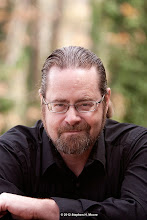Back in the querying stage, I did a crudton of research on the market: what was selling, who was selling it, who was writing it, how they were selling it, what the covers looked like, what movies or television shows were sort of like the stuff that was selling. Even that crudton was barely a crumb on the surface of this gigantic, seaming pile of…er, research you can do. And people were there all along the way, advising me to research more, know more, learn more. Ack!
In the end, I learned that I was basically Jon Snow. I knew nothing.
I signed with an agent three years ago, and holy hell has the book business changed since then. No one predicted the convulsion our industry has endured, and I honestly don’t believe anyone has a clear handle on where it’s headed from here. We think trends are toward more optimistic, fluffy stuff. But tomorrow’s news story stands a good chance of yanking the stuffing right out of us. Alternately, if we go dark and current events go darker, I can’t imagine readers are going to follow us down into the pit of despair. And bless them for not.
So since I’m failing so completely to predict, how about I wish instead? That's what futuristic fictioneers do, after all: we build a world to our own spec. And if I were building the near future of the publishing biz, here are a few trends I would like to see:
- More characters of color. Not just because representation matters (though it definitely does), but also because that's the way the world looks. Humans are a wonderfully, wildly diverse lot.
- A resurgence of cyberpunk or more specifically, post-cyberpunk (e.g., Neal Stephenson’s Snow Crash). Technology is eating us alive right now in the real world, so fiction where we pwn that stuff would be empowering.
- Gay characters who exist in stories that aren’t about gayness. You know, where they’re just people, peopling.
- A retreat from trope-stuffing. One or two are fine, but commercial fiction has become overloaded with tropes, and the stories suffer from this bloat. At least we writer types should seek to invert or turn a few tropes sideways.
- Less mocking. Mockery isn’t funny, and I’m tired of reading books where “comedy” occurs at the expense of someone else.
- Consent. So much consent. Consent on every page. Heck, a whole cast of characters who are oh-yeah, all-in enthusiastic about the sexytimes.
- On a related note, I would like the word “mine” in a romantic context to become archaic usage. People don’t belong to each other and are not objects to be won.
- Actually, instead of stories about horrible characters doing horrible things to each other, how about some books about good people doing awesome things for each other?
- I mean, if you need stakes and stuff, they can always save the world. I’m so over being told that I as a reader like to see characters making poor life decisions. I don’t.
- Oh! And this: a gory, blood-spattered, 'bout-time end to cliffhangers.
Yeah. I feel better now. Probably haven't predicted anything at all, but I definitely feel better. How about you? You got anything specific you'd like to show up on your to-be-read pile?











